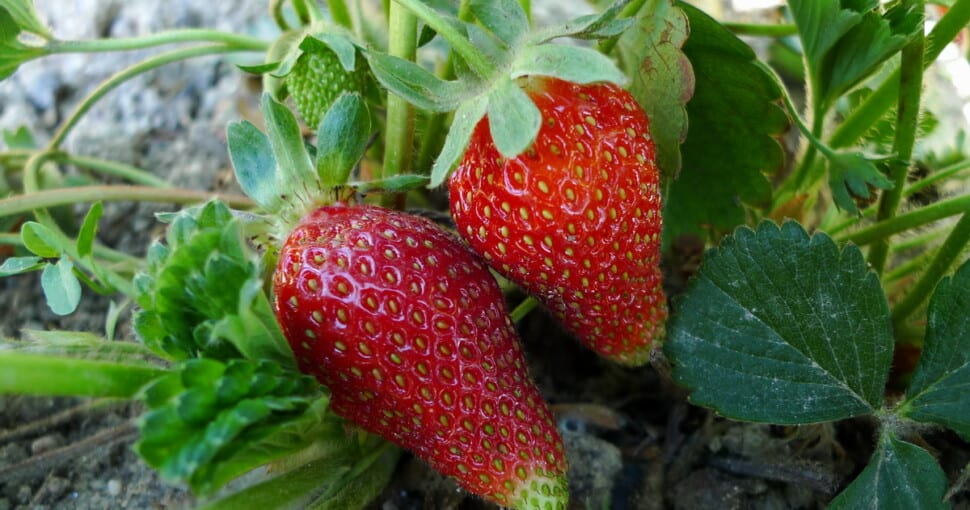You may find several plants in your garden that look like strawberries. Mock strawberries and strawberry weed look like real strawberries, but they aren’t the real thing. All three have trifoliate leaves with toothed edges and are propagated by runners. Get to know the difference, so you don’t pull out or propagate the wrong one!
Contents
- 1. Mock Strawberry – Potentilla Indica
- 2. Strawberry Weed – Potentilla Norvegica
- 3. Wild Strawberries – Fragaria vesca
- 4. Barren Strawberries – Potentilla sterilis
- 5. Avens – Geum
- 6. Killarney Strawberry Tree – Arbutus unedo
- 7. Hairy Mallow – Anisodontea scabrosa
- 8. Carolina Buttercup – Ranunculus carolinianus
- Should You Keep Wild Or Mock Strawberries In Your Garden?
Knowing which plant is a real strawberry and which is a lookalike will be handy when planning your garden. In the case of plants that look like strawberries, some look almost identical as young plants. Knowing how to tell the lookalike apart from the real thing when it is a young plant will save you time and effort.
What makes other plants look like cultivated strawberries? Five characteristics identify a cultivated strawberry:
- Have toothed, trifoliate leaves (three distinct segments)
- Spread by runners
- Produce white or pink flowers before the fruit grows
- Bear red, fleshy fruit that is covered in seeds
- Grow low to the ground
At least one of these characteristics is shared by some other plants. In some cases, as many as four of these characteristics are shared by other plants. Often this makes it difficult to tell cultivated strawberries apart from other plants that look like strawberries.
The easiest way to tell if a plant is a cultivated strawberry or a lookalike is the color of the flower. Cultivated and wild strawberries produce a white or pink flower before they fruit. Plants that only look like strawberries often have a yellow flower or no flower at all.
1. Mock Strawberry – Potentilla Indica
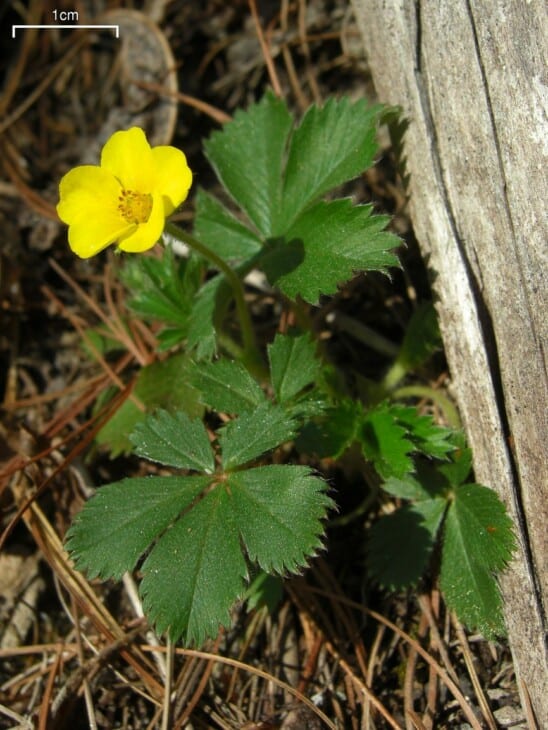
The most common strawberry lookalike is the mock strawberry (Potentilla indica). In different regions, these are also called Indian strawberries or backyard strawberries. They are a close relative of cultivated strawberries which is why they are often confused. The easiest way to tell mock and cultivated strawberries apart is by the color of their flowers. Cultivated strawberries have white or pink flowers, whereas mock strawberries have yellow flowers.
These plants have several shared features with cultivated and wild strawberries: they also have toothed, trifoliate leaves spread by runners and bear red, fleshy fruit covered in seeds. The fruit is much smaller than cultivated strawberries and is tasteless, so it is not usually propagated for its fruit. In some parts of the world, mock strawberry fruit is still collected and eaten for its high protein, vitamin C, and iron content.
Even though they are hard to tell apart from cultivated strawberries, they are not the same. A common misconception is that cultivated strawberries were developed from mock strawberries, but this is not the case. Cultivated strawberries were propagated from wild strawberries.
2. Strawberry Weed – Potentilla Norvegica
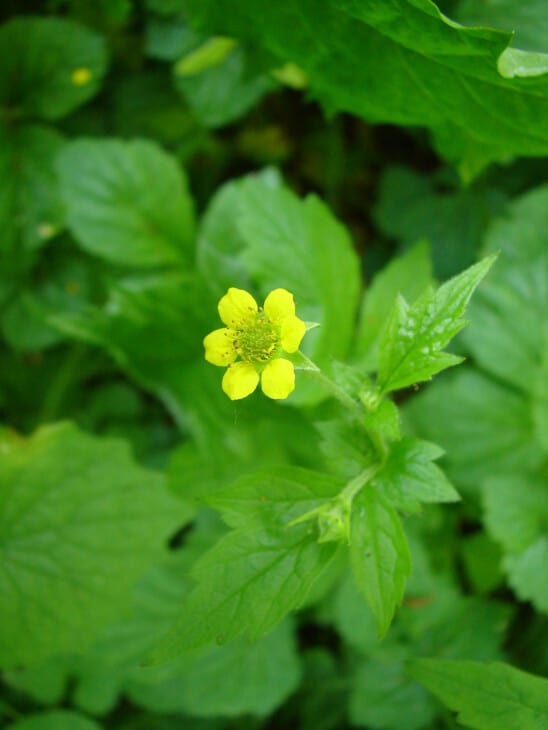
Another family of plants with variants resembling cultivated strawberries belongs to the cinquefoil family. These are called strawberry weed or Norwegian cinquefoil. Most cinquefoil plants have a five-part leaf pattern. Still, some cinquefoil members have a three-part leaf with toothed edges that resemble strawberries which can be confused with cultivated strawberries.
Strawberry weed has a yellow flower rather than a cultivated strawberry’s white or pink flower. Strawberry weed or Norwegian cinquefoil also doesn’t bear fruit. Where a plant has dead or dying flowers without turning into fruit, this is a sign that it is not cultivated strawberries.
Mature strawberry weed will often grow taller than cultivated strawberries, reaching a height of 1-3 feet.
3. Wild Strawberries – Fragaria vesca
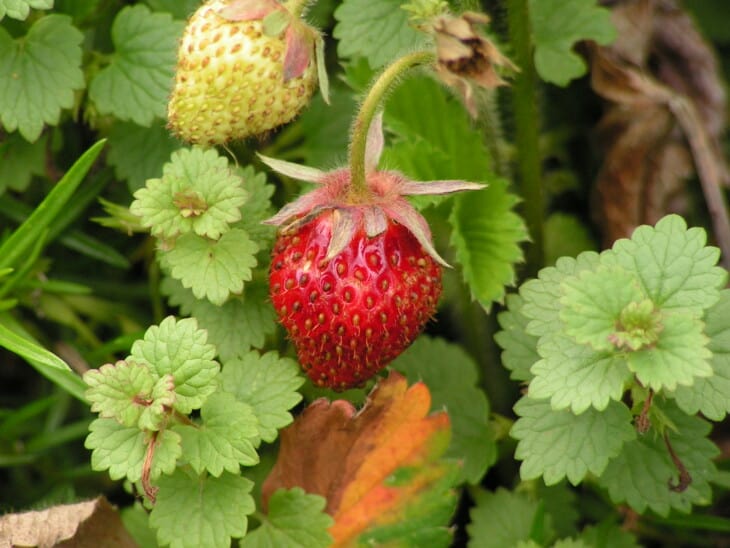
Occasionally you will come across wild strawberries on nature walks or in other wild areas. These look the same as cultivated strawberries with white or pink flowers and produce fruit like cultivated strawberries. Horticultural selection for better fruit means cultivated strawberries are larger and bear fruit more reliably.
Being plants that are not intentionally planted for their fruit or as cultivated plants is the main difference between cultivated strawberries and wild strawberries. Being a wild plant, they also go by many other names; woodland strawberry, European strawberry, Alpine strawberry, or Carpathian strawberry.
Because they occur in the wild, conditions for a thriving plant may not be possible, so wild strawberries do not bear fruit as reliably as cultivated strawberries. The fruit of wild strawberries is also not guaranteed to be as flavorful. However, some fruit is delicious, and foragers seek this wild variety.
4. Barren Strawberries – Potentilla sterilis
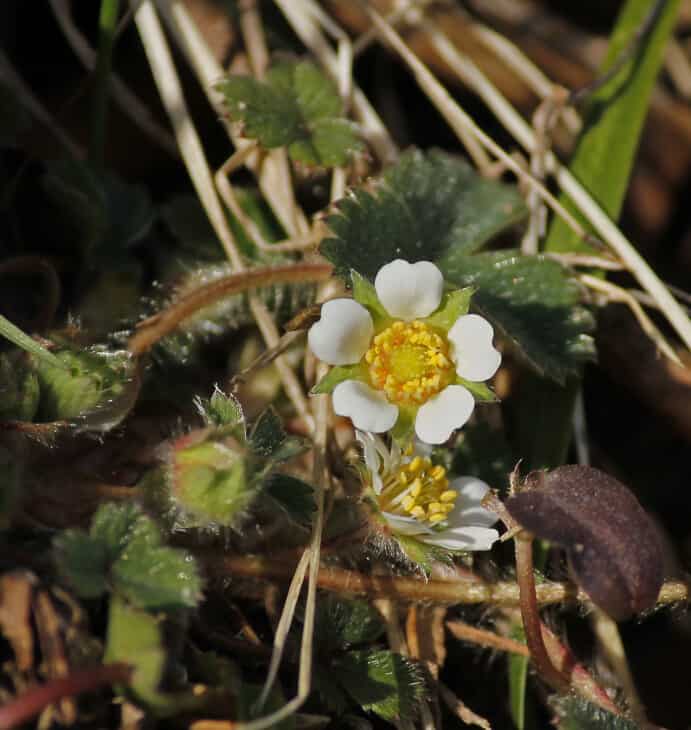
Barren strawberries are in the same family as strawberry weed, Rosaceae. These plants have trifoliate-toothed leaves propagated by runners and do not bear fruit. The feature that makes it look almost like a cultivated strawberry plant is that it produces white flowers.
Barren strawberries have a darker green leaf that is more matt than cultivated strawberries. These plants have a shortened terminal tooth on each leaflet which allows one to tell it apart from strawberry plants.
5. Avens – Geum
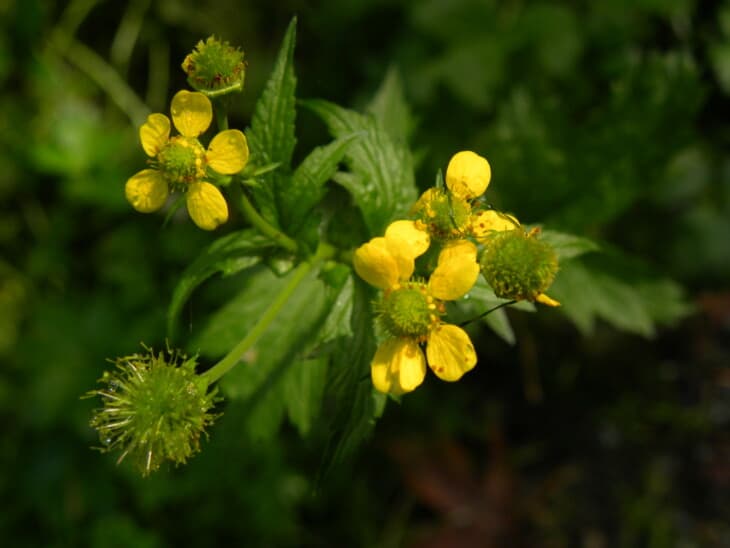
Avens is a perennial flowering shrub with stemmed leaves that sometimes resemble strawberry leaves.
Avens have divided dark green leaves with toothed edges that sometimes split into three distinct leaf areas which resemble trifoliate strawberry leaves. With over 50 species of Avens plants, some will be confused with strawberry plants because of their leaves and five-petal flowers.
Avens produce brightly colored flowers with five petals. They can be found flowering with yellow, orange, pink, or purple flowers. Avens grow well in cool climates where strawberries are often planted.
6. Killarney Strawberry Tree – Arbutus unedo
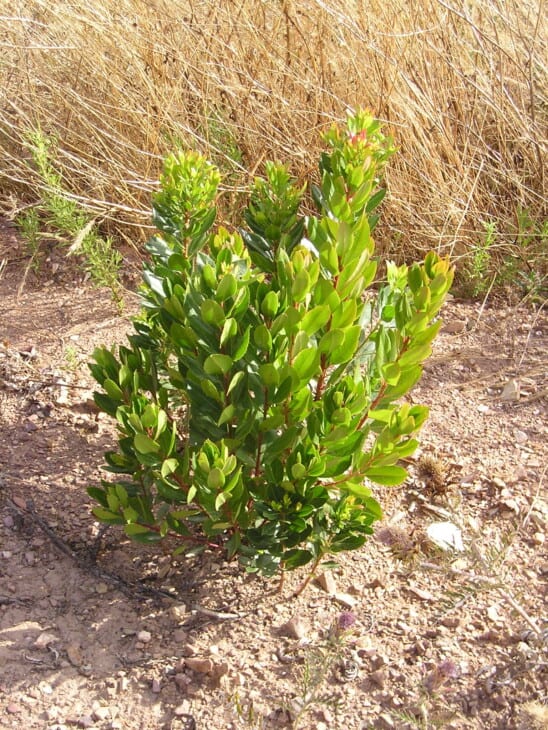
Strawberry Tree is an evergreen Mediterranean shrub that produces fruit that looks like strawberries. The fruit is red, fleshy, and spiked.
At a quick glance, the fruit is easily confused with strawberries, especially when it has been picked and is away from the shrub. The fruit itself matures in autumn but does not taste like strawberries.
7. Hairy Mallow – Anisodontea scabrosa
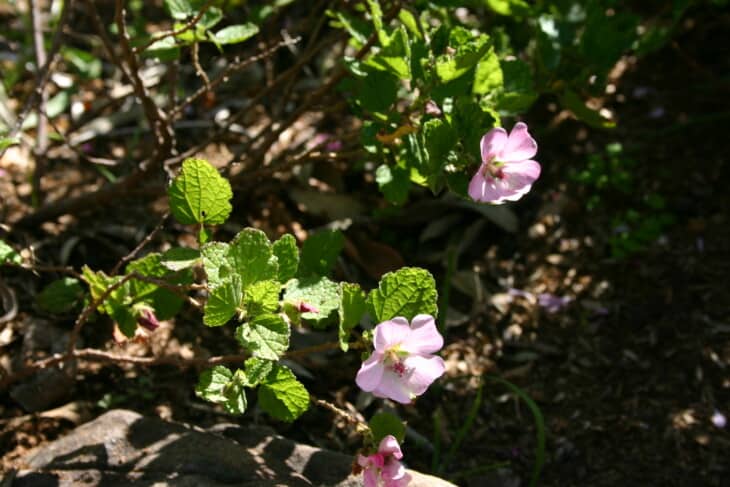
Hairy mallows are shrubs that produce a three-part palmatifid leaf that can resemble those of strawberry plants. The size of the plant and the showy pink flowers also can resemble strawberry plants.
As the leaves are only lobed and not split into three distinct leaves, they can easily be distinguished from cultivated strawberries. Leaves are hairy and can have a similar coloring to strawberries and other potentilla plants.
8. Carolina Buttercup – Ranunculus carolinianus
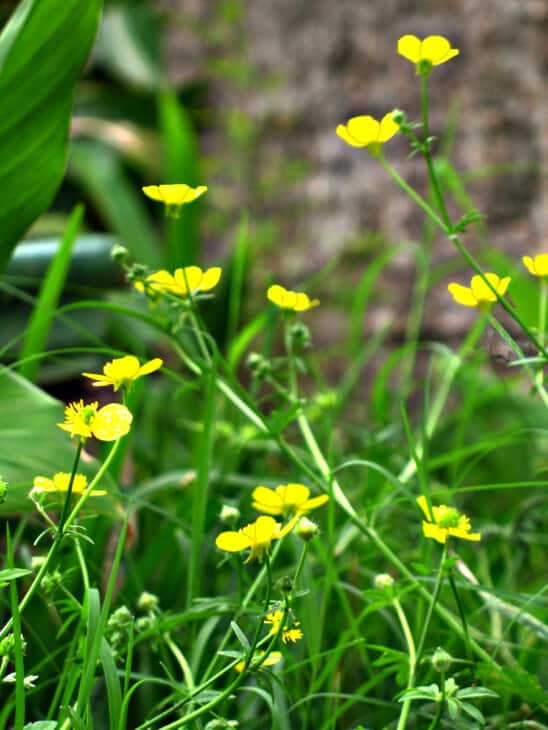
A Carolina Buttercup is a perennial shrub with compound leaves that often present in round-toothed clumps of three. While the flowers are yellow as opposed to the white or pink on a cultivated strawberry, these plants look similar. They are of a similar size to strawberries.
Flowers are more prolific on a Carolina buttercup but do not produce a showy fruit like strawberries. They are also spread by creeping but have a lighter green leaf.
Should You Keep Wild Or Mock Strawberries In Your Garden?
Any plant you do not intentionally plant in your garden could be considered a weed. Plants that ‘appear’ in your garden that look like strawberries are usually considered weeds. Some gardeners advise removing and killing all wild and mock strawberries from the garden entirely.
The characteristic runners that make cultivated strawberries easy to grow is the downfall of mock strawberries. These plants usually become invasive in a flowerbed and will outgrow and kill more fragile plants. Some gardeners are happy to have running plants that produce pretty yellow flowers and bear bird-attracting fruit in parts of the garden. They must be cut back and managed, but the choice is yours.

